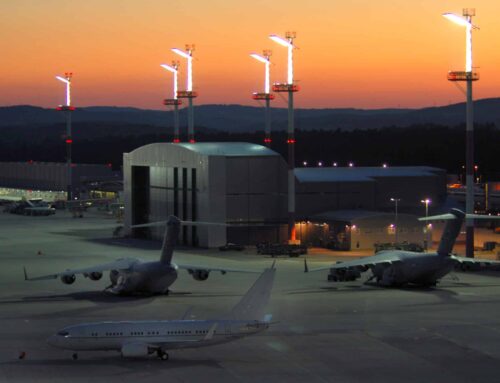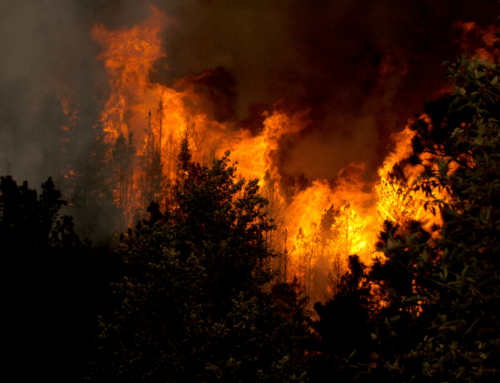TCS Development and Research Director, Mike Surrusco, recently took his family on the great American road trip. Showing dedication and the advancement of technology, he brought a mobile hot spot and sent his thoughts from the road as he saw things that reminded him of TCS’s work.
Take it, Mike:
This summer I had the same idea as everyone else: When forced to stay-at-home, get a mobile home. So, me and my family of five rented a 31-foot RV, aptly nicknamed “Shamu” and set out on a 7,000-mile odyssey to the West Coast and back. It took almost three weeks, as Shamu has a top speed of only 65 mph even on flat straightaways, which meant lots of stops along the way. Having worked at TCS for more than a decade, I found it hard not to think about all the things we work on that touch the lives of the people and places we visited. So here, dear Wastebasket reader, is an abbreviated log of our trip through the American Heartland to the proverbial Wally World….
Being life-long Easterners, we opted to fast forward through the early states with only short layovers in Pittsburgh, PA and South Bend, IN to visit my Alma Mater (Go Irish!). From there we headed past Chicago and Madison, WI and spent the night near Albert Lea, MN, where corn and soy reign supreme. Minnesota’s 1st Congressional District ranks 18th in the nation in farm subsidies. They might move up as ag special interests are looking to make tens of billions in “temporary” pandemic payments a perennial program.
We took I-90 for the more northern route on the way out, through South Dakota and past the Delta-09 Minuteman Missile Silos. I had hoped to see the business end of an ICBM up close and personal, but like everything we did (and didn’t do) on our trip, social distancing and avoiding close public contact was paramount. So we had to skip this national park. TCS has long advocated for the land-based silos to be phased out – because they are largely obsolete given all our other nuclear capabilities, and those of our would-be adversaries – instead of spending more than $1 trillion modernizing all three legs of the nuclear triad. Maybe next time.
Paid our entrance fees and took the kids to Mt. Rushmore and Devil’s Tower, both awesome – highly recommend. Learned that Devil’s Tower was the very first National Monument, dedicated by rough rider President Teddy Roosevelt in 1906. These are also parks President Trump kept open during the last government shutdown by shifting entrance fees away from their purpose (funding long-term repair and maintenance) to “daily maintenance” of taking out the trash, riding roughshod over the law and constitution. As a bonus, the KOA campground plays Close Encounters on an outdoor screen every night at 8pm.
We made our way up to spend the night near Livingston, MT. Here in Montana the Congressional Missile Caucus helps support the local economy by requiring unused silos to remain in a “warm” or partially operational status. While this is certainly one way to send federal dollars to stimulate the local economies out here, it’s hard to see it as more than that.
Onward to Glacier National Park in northern Montana. If you have ever been there, you may have driven on the Going to the Sun Road through the middle of the park. Now imagine doing that in an RV known as Shamu – more like, Going to the Bottom of Lake McDonald Road.
We finally arrived at our Pacific destination in Astoria, OR, right at the mouth of the Columbia River. Here we got to see the site of a wasteful U.S. Army Corps of Engineers deepening project near and dear to the TCS heart. After TCS and the Oregonian newspaper documented the project’s dubious finances, the Corps formed a peer review panel that said yes, the books were cooked and then were ignored. The deepening went through, but the predicted level of traffic to the port of Portland way upriver did not. It’s a familiar story.
Headed back now, we spent our first night near Boise, ID. We finally got to a state where the F-35 aircraft – the most expensive procurement program in the history of the Pentagon – is responsible for fewer than 1000 local jobs. Those folks at Lockheed Martin know how to spread around the contractual largesse. Great way to keep pressure on Members of Congress to support this astronomically expensive program!
After quick stop at the Craters of the Moon National Monument (dried lava), we drove by the Idaho National Laboratory, where some of the Department of Energy’s space-age ideas have outstripped reality. And when I say “drove by,” I mean a small sign by the highway in the middle of Nowhere, ID, next to a driveway that extended to the horizon. On-site at the lab, one company is attempting to start up the first small modular reactor (SMR) – a “mini-nuke” subsidized with hundreds of millions of taxpayer dollars. SMRs were supposed to be the next wave of nuclear power, but they’ve proved way too costly to be worth Congress’ continuous support.
On through the vast emptiness of southern Idaho into Wyoming, through Gillette and into Cheyenne. Wyoming has featured prominently in our work on energy and natural resources over the years. TCS staff has travelled to Wyoming several times in the past to testify at public hearings held by the Bureau of Land Management about the federal coal program (Powder River Basin is nearby) and the Methane Waste Rule. More recently, the BLM is granting “royalty relief” to oil and gas producers in the state, under the guise of economic stimulus. Never mind that Wyoming, like other states, faces massive budget problems now, and lowering an already-low royalty rate will only decrease revenues. And that further lowering royalty rates is a terrible way to boost shot-term economic activity.
Our trip almost ended unexpectedly in Iowa, as I almost pumped Shamu full of E-85 gasoline. Corn ethanol, the darling of biofuel advocates, has failed to deliver on its environmental and energy promises despite decades of taxpayer subsidies. E-85 is especially problematic because it is so corrosive it requires a separate infrastructure for distribution, earning the USDA’s massive effort to expand so-called blender pumps the infamous Golden Fleece Award.
The next night was spent in Rock Island, IL, where Mississippi River flows east to west. Rock Island is also home to the Army Corps District that cooked the books on a project to build new navigation locks on the Mississippi River. After they were exposed by a whistleblower, they came up with a new recipe to achieve the same outcome – a boondoggle.
And our last stop before home, Sandusky, OH. Travelling through the so-called Rust Belt makes me think of all the small businesses that took advantage of the Paycheck Protection Program – an economic lifeline during the current pandemic. The Sandusky Register estimated 22,000 jobs in their coverage area were saved through the program.
Back at my desk at home now, it’s hard to believe our little adventure is over. We all survived, and the kids will even grudgingly admit it was worth all the hours spent in the RV. It is going to take a lot of work and creativity for all of us to get through this strange time, and hopefully we will learn something in the process. Be safe and keep adventuring.











Get Social